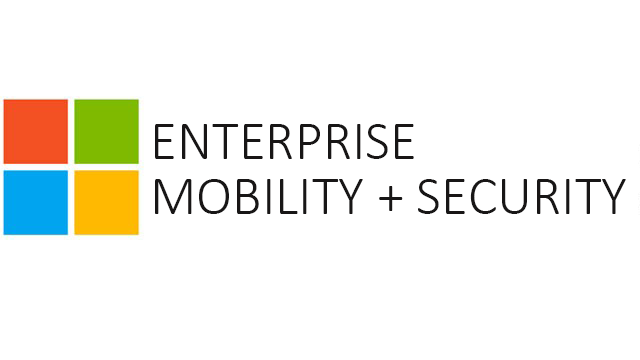Enterprise Mobility + Security E5 (ANNUAL): The Apex of Modern Digital Protection
In today’s rapidly evolving digital landscape, organizations face an unprecedented barrage of security threats, coupled with the complexities of managing a diverse ecosystem of devices, applications, and identities. The traditional perimeter-based security model is obsolete, replaced by a fluid environment where employees work from anywhere, on any device, accessing data stored across various cloud services.1 Navigating this intricate terrain requires a robust, integrated, and intelligent security framework.2 This is precisely where Microsoft’s Enterprise Mobility + Security E5 (ANNUAL) steps in, offering a comprehensive suite of capabilities designed to empower secure productivity for the modern enterprise.
EMS E5 is not merely a collection of disparate security tools; it’s a unified platform that provides identity-driven security, advanced threat protection, information protection, and unified endpoint management.3 The “ANNUAL” designation signifies a subscription model, providing organizations with predictable budgeting and continuous access to the latest security innovations and feature enhancements released by Microsoft throughout the year. For businesses committed to a proactive and holistic security posture, EMS E5 represents the pinnacle of Microsoft’s offerings in this critical domain.
The Core Challenge EMS E5 Addresses
The impetus behind a solution like EMS E5 stems directly from the seismic shifts in how businesses operate and how cyber threats manifest. Organizations grapple with:
- An Expanding Attack Surface: The proliferation of mobile devices (smartphones, tablets, laptops), personal devices (BYOD), and IoT devices connecting to corporate networks creates numerous entry points for attackers.4
- Sophisticated Cyber Threats: Phishing, ransomware, zero-day exploits, supply chain attacks, and nation-state-sponsored cyber espionage are becoming more frequent, targeted, and evasive.5
- The Cloud Imperative: As data and applications migrate to cloud platforms (SaaS, PaaS, IaaS), traditional network security controls become insufficient, necessitating cloud-native security solutions.
- Identity as the New Perimeter: With remote work and cloud access, user identities have become the primary target for attackers.6 Compromised credentials can lead to widespread data breaches and system compromise.7
- Data Sprawl: Sensitive information is no longer confined to on-premises servers but resides across devices, cloud apps, and collaboration platforms, demanding consistent protection regardless of location.8
EMS E5 directly confronts these challenges by weaving together a fabric of interconnected security services, providing visibility, control, and automated response capabilities across the entire digital estate.
Diving Deep into the Key Components of EMS E5
The power of EMS E5 lies in its tightly integrated components, each a best-in-class solution that, when combined, offers unparalleled protection. The E5 tier specifically unlocks the most advanced features within each of these services, moving beyond basic management to intelligent threat detection, automated response, and comprehensive governance.9
- Azure Active Directory Premium P2 (AADP P2): The Identity FoundationAt the heart of EMS E5 is AADP P2, Microsoft’s cloud-based identity and access management service.10 It provides single sign-on (SSO) to thousands of cloud applications, multi-factor authentication (MFA), and robust identity governance.11
- Core Function: Manages user identities and their access to resources, both on-premises and in the cloud. It enables Conditional Access policies, ensuring that users can only access resources under specific conditions (e.g., from a compliant device, from a trusted location).12
- E5 Enhancement: AADP P2 elevates identity security with Azure AD Identity Protection. This crucial feature uses machine learning to detect real-time and offline risks associated with user sign-ins and accounts, such as anomalous sign-in locations, leaked credentials, or impossible travel.13 It can automatically block or challenge risky sign-ins. Furthermore, Privileged Identity Management (PIM) is a cornerstone of E5, allowing organizations to manage, control, and monitor access to important resources within Azure AD, Azure, and other Microsoft Online Services.14 It provides just-in-time (JIT) and just-enough-access (JEA) capabilities for privileged roles, significantly reducing the attack surface related to administrative accounts.15
- Core Function: Manages user identities and their access to resources, both on-premises and in the cloud. It enables Conditional Access policies, ensuring that users can only access resources under specific conditions (e.g., from a compliant device, from a trusted location).12
- Microsoft Intune: Unified Endpoint ManagementIntune is Microsoft’s cloud-based service for mobile device management (MDM) and mobile application management (MAM).16 It allows organizations to manage corporate-owned devices, enable BYOD scenarios, and protect corporate data on personal devices.17
- Core Function: Enrolls and configures devices (Windows, macOS, iOS/iPadOS, Android), deploys applications, enforces device compliance policies, and applies app protection policies to safeguard corporate data within applications, even on unmanaged devices.
- E5 Enhancement: Intune in E5 benefits from deeper integration with Microsoft Defender for Endpoint.18 This synergy provides advanced endpoint analytics, allowing IT administrators to monitor device performance, application reliability, and startup times, proactively identifying issues that impact user experience. The integrated security features enable automated remediation of threats detected on endpoints, creating a more resilient and self-healing device ecosystem.19
- Azure Information Protection Premium P2 (AIP P2): Data Classification and ProtectionAIP P2 is designed to help organizations discover, classify, label, and protect sensitive documents and emails.20 It ensures that data remains protected regardless of where it’s stored or with whom it’s shared.
- Core Function: Provides manual and recommended classification labels for documents and emails, applying encryption and rights management policies.21 This prevents unauthorized access to sensitive information, even if it leaves the corporate network.
- E5 Enhancement: AIP P2 offers automatic classification capabilities, allowing policies to automatically apply labels and protection based on sensitive information types (e.g., credit card numbers, social security numbers) detected within content. The AIP scanner can discover, classify, and protect files on on-premises file shares and SharePoint servers.22 E5 also includes advanced analytics and reporting to monitor how sensitive data is being accessed and shared, providing greater visibility into data usage patterns.23
- Core Function: Provides manual and recommended classification labels for documents and emails, applying encryption and rights management policies.21 This prevents unauthorized access to sensitive information, even if it leaves the corporate network.
- Microsoft Defender for Cloud Apps (MDCA): Cloud Access Security Broker (CASB)24Formerly known as Microsoft Cloud App Security (MCAS), MDCA acts as a Cloud Access Security Broker (CASB), providing comprehensive visibility, control, and protection for cloud applications.25
- Core Function: Discovers “shadow IT” (unauthorized cloud apps), assesses cloud app risk, enforces data loss prevention (DLP) policies, and provides threat protection for sanctioned cloud applications (e.g., Microsoft 365, Salesforce, Box).26
- E5 Enhancement: MDCA in E5 offers more advanced anomaly detection capabilities, leveraging machine learning to identify unusual user behavior that might indicate a compromise (e.g., impossible travel, mass downloads).27 It provides deeper integration with other Microsoft security products for a unified security incident response. E5 also includes app governance, offering security and policy management for OAuth-enabled apps that access Microsoft 365 data, helping to prevent over-privileged or malicious app access.28
- Core Function: Discovers “shadow IT” (unauthorized cloud apps), assesses cloud app risk, enforces data loss prevention (DLP) policies, and provides threat protection for sanctioned cloud applications (e.g., Microsoft 365, Salesforce, Box).26
- Microsoft Defender for Identity (MDI): On-Premises Identity Threat DetectionMDI (formerly Azure Advanced Threat Protection or Azure ATP) is a cloud-based security solution that leverages your on-premises Active Directory signals to identify, detect, and investigate advanced threats, compromised identities, and malicious insider actions.29
- Core Function: Monitors domain controllers and network traffic to detect suspicious activities and known attack patterns (e.g., Pass-the-Hash, Golden Ticket, reconnaissance activities).
- E5 Enhancement: MDI in E5 provides more sophisticated behavioral analytics and machine learning to detect zero-day attacks and highly targeted threats that might bypass traditional security controls.30 Its seamless integration with Microsoft Defender XDR (formerly Microsoft 365 Defender) allows for a unified view of identity-related incidents alongside endpoint, email, and cloud app threats, enabling faster and more effective cross-domain investigations and automated remediation.
- Microsoft Entra ID Governance: Streamlined Identity LifecycleWhile some identity governance features are available in AADP P1, the E5 suite significantly enhances capabilities related to identity lifecycle management, access reviews, and entitlement management.31
- Core Function: Automates the provisioning and de-provisioning of user accounts, manages access to groups and applications, and facilitates access reviews to ensure that users only have the access they need, for as long as they need it.
- E5 Enhancement: Entra ID Governance in E5 offers more advanced features for automated workflows for access requests and approvals, ensuring that access is granted and revoked efficiently and securely.32 It also provides robust capabilities for separation of duties (SoD) enforcement, helping organizations meet compliance requirements by preventing conflicts of interest in access assignments.33
Why Choose EMS E5 (ANNUAL)?
The decision to invest in EMS E5, particularly on an annual subscription, is a strategic one for organizations prioritizing comprehensive security and operational efficiency:
- Holistic Security Posture: EMS E5 moves beyond point solutions, offering an integrated approach that protects identities, devices, applications, and data across the entire digital estate. This reduces security gaps and provides a unified view of threats.
- Advanced Threat Protection: Leveraging Microsoft’s vast threat intelligence, AI, and machine learning capabilities, EMS E5 provides proactive and reactive defenses against sophisticated and evolving cyber threats.34
- Simplified Management and Reduced Complexity: Consolidating security and management tools under a single Microsoft umbrella reduces vendor sprawl, simplifies licensing, and streamlines IT operations.35
- Robust Compliance and Governance: The advanced features in AADP P2, AIP P2, and Entra ID Governance help organizations meet stringent regulatory requirements (e.g., GDPR, HIPAA, CCPA) by providing granular control over access, data, and identity lifecycles.
- Cost-Effectiveness: While an upfront investment, EMS E5 often proves more cost-effective than purchasing and integrating multiple best-of-breed solutions from different vendors, reducing operational overhead and potential integration issues.36
- Predictable Budgeting and Continuous Innovation: The annual subscription model provides predictable costs. More importantly, it ensures organizations always have access to Microsoft’s continuous research and development, receiving new features, security updates, and threat intelligence without additional purchases.
Target Audience
EMS E5 is ideal for:
- Organizations of all sizes with a strong emphasis on security and compliance.
- Businesses in highly regulated industries (finance, healthcare, government).
- Companies with a significant remote or hybrid workforce.
- Enterprises undergoing digital transformation and migrating to the cloud.
Conclusion
Enterprise Mobility + Security E5 (ANNUAL) stands as a foundational pillar for modern enterprises seeking to thrive in a cloud-first, mobile-first world. It represents Microsoft’s commitment to providing a comprehensive, intelligent, and integrated security framework that not only defends against advanced threats but also empowers secure productivity. By unifying identity, endpoint, data, and cloud app protection, EMS E5 offers a cohesive defense strategy, ensuring that organizations can embrace digital innovation with confidence, knowing their most critical assets are protected.37 The annual subscription further solidifies this value proposition, delivering continuous security enhancements and predictable investment for a truly resilient digital future.












